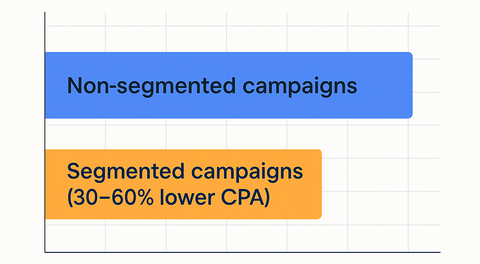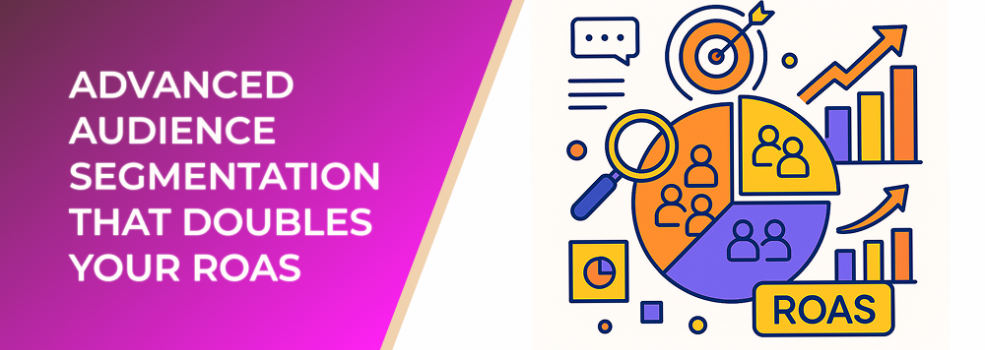Audience segmentation remains one of the strongest performance levers in digital advertising. While many brands rely on broad targeting or generic demographic filters, the highest‑performing campaigns consistently structure their audiences with data‑driven precision.

Segmented campaigns consistently reduce CPA by 30–60% compared to non-segmented approaches
According to recent industry findings, campaigns that employ detailed segmentation see up to 30–60 percent lower cost per acquisition compared to non‑segmented campaigns. Another study shows that 71 percent of consumers expect personalized experiences, and relevance driven by segmentation directly contributes to higher engagement and conversion rates.
The ROI Impact of Smarter Segments
Segmentation does more than organize an audience—it strengthens the full campaign lifecycle.
1. It Eliminates Budget Waste
Irrelevant impressions drain budgets. By breaking audiences into micro‑groups based on behaviors, interests, and intent signals, you ensure your ads reach people who are more likely to act. Brands that adopt granular segmentation report as much as 40 percent improvement in budget efficiency.
2. It Boosts Ad Relevance and Quality Ranking
Higher relevance scores reduce costs and expand delivery. When ads match the exact motivations of each audience segment, click‑through rates commonly rise by 25–50 percent, improving placement priority and lowering cost per click.
3. It Drives Higher Conversion Rates
Segmentation allows precise message‑to‑audience alignment. Instead of one general message, each segment receives creative tailored to where they are in the buying journey. This approach often leads to 2× higher ROAS because every touchpoint becomes more contextually meaningful.
Building Segments That Perform
Behavior‑Based Segments
Behavioral signals such as browsing patterns, engagement depth, or frequency of interactions help isolate audiences with higher intent.
Interest‑Driven Segments
Group audiences by shared professional or lifestyle interests to tailor narratives that resonate at a deeper level.
Retargeting Segments
Retargeting refines the final stages of the funnel by focusing on individuals who have already demonstrated clear interest. Breaking this down further—product viewers, cart abandoners, or repeat engagers—lets your messaging become progressively more specific.
Lookalike‑Style Prospecting Segments
Expanding into new audiences using data‑mirroring principles ensures that new prospects share behavioral and demographic similarities with your best converters.
Deploying a Multi‑Layer Segmentation Strategy
A powerful segmentation system isn’t based on a single variable—it layers multiple dimensions. For example, you might combine:
-
Recent interaction behavior
-
Professional or lifestyle interests
-
Purchase intent signals
-
Funnel stage alignment
This layering creates micro‑audiences that maintain scale while dramatically improving accuracy.
Measuring and Optimizing for Higher ROAS
Track Performance by Segment
Measure click‑through rates, conversion rates, and cost per acquisition at the segment level. This exposes which groups respond best to specific messaging.
Test Creative‑to‑Segment Fit
Pair different creatives with each micro‑segment and evaluate their performance individually.
Reallocate Budget Dynamically
Shift spend to top‑performing segments weekly or bi‑weekly to maintain upward momentum in ROAS.
Further Reading
Here are three additional articles from the catalog that complement this topic:

